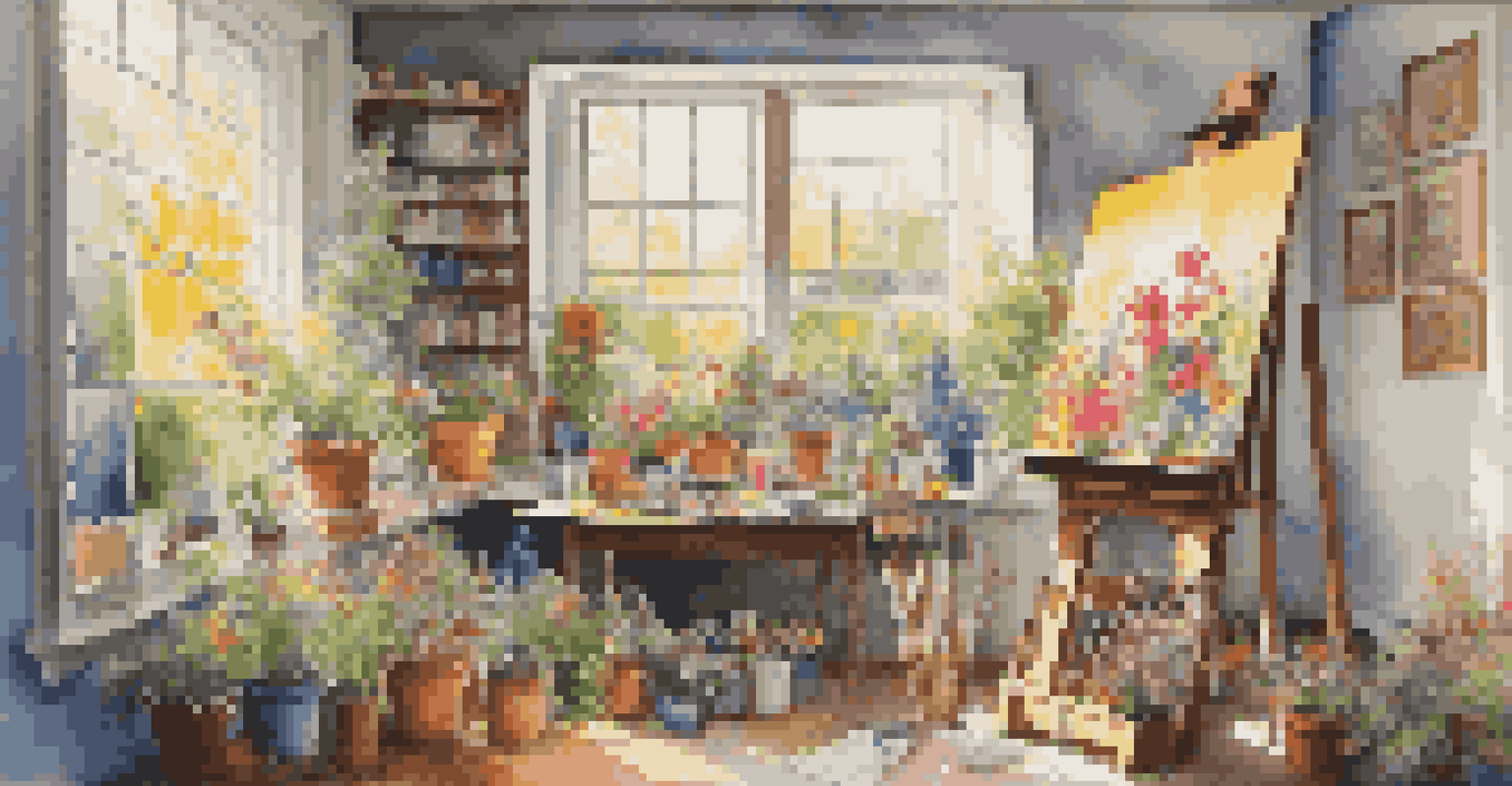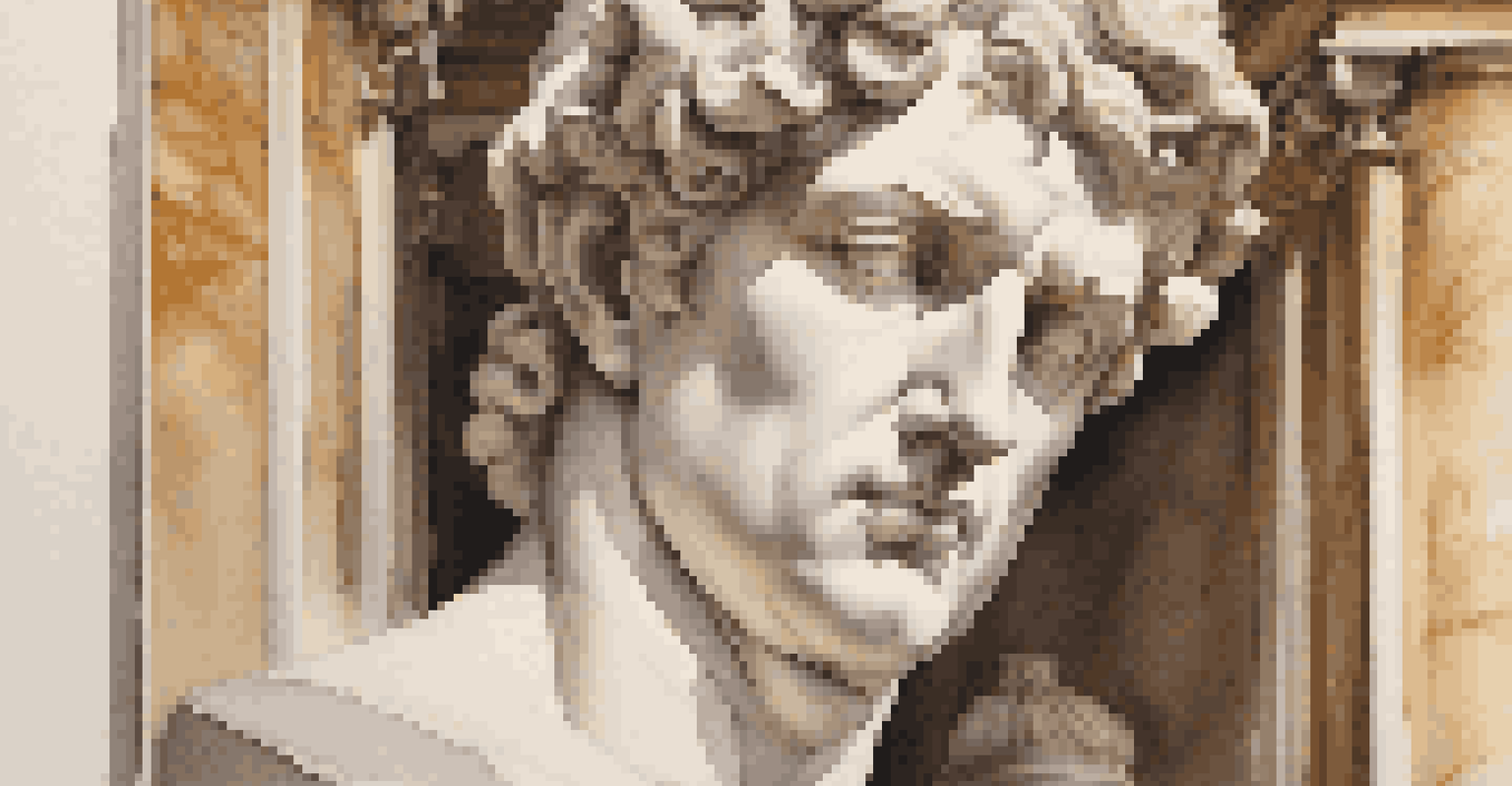Art Criticism and the Concept of Taste: A Historical Overview

Defining Art Criticism: What Is It Really?
Art criticism is the practice of analyzing and evaluating artworks, providing insight into their meaning and significance. It serves as a bridge between the artist's intent and the audience's experience, guiding viewers through the complexities of art. This process not only involves personal opinions but also incorporates cultural and historical contexts that shape our understanding of art.
Art is not freedom from discipline, but disciplined freedom.
At its core, art criticism is about fostering a deeper appreciation for artistic expression, challenging viewers to think critically about what they see. By examining elements like technique, style, and emotional resonance, critics help demystify art, making it more accessible to everyone. This engagement promotes dialogue, encouraging diverse interpretations and discussions around art's role in society.
Over the centuries, art criticism has evolved alongside artistic movements, reflecting changing tastes and societal values. From the formal critiques of the Renaissance to the more subjective approaches of modernism, this evolution illustrates how our understanding of art continuously adapts, influenced by various factors such as politics, technology, and cultural shifts.
The Historical Roots of Art Criticism
Art criticism dates back to ancient civilizations where philosophers and scholars began to reflect on the nature of art and beauty. In ancient Greece, figures like Plato and Aristotle laid the groundwork for aesthetic theories, pondering the relationship between art and truth. Their discussions established a foundation for subsequent critiques, emphasizing reason and moral values in artistic evaluation.

As we move into the Renaissance, art criticism became more formalized, with critics like Giorgio Vasari documenting artists' lives and works. His writings not only celebrated individual talent but also critiqued artistic techniques, establishing a precedent for future critics. This period marked a shift towards appreciating the artist's role as a significant contributor to culture and society.
Art Criticism Connects Artists and Audiences
Art criticism bridges the gap between an artist's intent and the audience's understanding, enriching the appreciation of artistic expression.
The Enlightenment further propelled art criticism into the public sphere, as thinkers like Denis Diderot began publishing reviews of exhibitions. This democratization of art criticism allowed a broader audience to engage with art, fostering a sense of taste that was not limited to the elite. It was during this time that the concept of 'taste' began to emerge as a pivotal factor in evaluating art.
The Concept of Taste: How It Evolved
The term 'taste' in art criticism refers to an individual's aesthetic preferences and judgments. It encompasses the values, beliefs, and cultural influences that shape how we perceive and appreciate art. Historically, taste has been seen as a reflection of social status, with certain styles and genres favored by the elite, while others were marginalized.
The best artist has no conception that a marble block does not contain within itself.
During the 18th century, the idea of taste began to democratize, as more people gained access to art through public exhibitions and salons. This shift allowed for a more diverse range of artistic expressions to be evaluated, challenging the previously held notions of what constituted 'good' art. Critics like Edmund Burke and Immanuel Kant contributed to the discourse on taste, with Kant emphasizing the subjective nature of aesthetic judgment.
As the industrial revolution progressed, taste continued to evolve, becoming more inclusive and varied. The emergence of new art movements, such as Impressionism and Post-Impressionism, further blurred the lines of traditional taste, prompting debates among critics and audiences alike. Today, the concept of taste remains fluid, shaped by globalization and the internet, which exposes us to a plethora of artistic expressions from around the world.
The Role of Art Institutions in Shaping Taste
Art institutions, such as museums and galleries, play a crucial role in shaping public taste and understanding of art. Through curated exhibitions and educational programs, these institutions guide audiences in appreciating various artistic movements and styles. Their influence extends beyond mere presentation; they also help define what is considered valuable or important in the art world.
Historically, institutions have often favored certain artists and movements, which can create biases in public perception. For instance, the dominance of European art in many Western museums has often overshadowed the contributions of artists from other cultures. This has led to ongoing discussions about representation and inclusivity within the art world, challenging institutions to broaden their perspectives.
Taste is Influenced by Culture and Society
The concept of taste in art has evolved over time, reflecting changing societal values and the democratization of artistic evaluation.
In recent years, many art institutions have begun to address these biases by diversifying their collections and promoting underrepresented artists. This shift not only enriches public taste but also reflects a more accurate representation of the global art landscape. As institutions continue to evolve, they play a pivotal role in shaping contemporary taste and fostering a more inclusive appreciation of art.
The Impact of Technology on Art Criticism and Taste
With the rise of digital technology, art criticism has transformed dramatically, making it more accessible than ever. Online platforms have opened avenues for critics and enthusiasts to share their insights, critiques, and interpretations of art with a global audience. This democratization has allowed for a wider range of voices, challenging traditional art hierarchies and expanding the concept of taste.
Social media, in particular, has reshaped how art is experienced and critiqued. Platforms like Instagram and TikTok enable artists to showcase their work directly to the public, bypassing traditional gatekeepers. This shift has led to the emergence of new trends and styles, often dictated by audience engagement rather than institutional approval, significantly influencing contemporary taste.
However, the rapid pace of information and the prevalence of opinionated content can also lead to confusion and fragmentation in art criticism. With so many perspectives available, it can be challenging for audiences to discern quality and depth in critiques. Nevertheless, this dynamic landscape continues to evolve, reflecting the diverse and ever-changing nature of taste in the digital age.
Contemporary Art Criticism: Challenges and Opportunities
Contemporary art criticism faces unique challenges as it navigates a complex and rapidly changing art world. The rise of conceptual art and new media has blurred the lines between various artistic forms, making it difficult for critics to apply traditional evaluation methods. This complexity calls for innovative approaches to critique that embrace experimentation and interdisciplinary thinking.
Moreover, the increasing emphasis on inclusivity and representation in the art world requires critics to adapt their frameworks. Engaging with diverse perspectives and cultural contexts can enrich critiques and foster a more nuanced understanding of contemporary art. Critics must be willing to confront their biases and expand their definitions of taste to reflect the multiplicity of voices in today's art scene.
Technology Shapes Modern Art Criticism
Digital platforms and social media have transformed art criticism, allowing diverse voices to emerge and influencing contemporary taste.
Despite these challenges, contemporary art criticism also presents exciting opportunities for dialogue and exploration. By embracing new technologies and engaging with a broader audience, critics can cultivate a vibrant discourse around art that reflects the complexities of our time. This evolving landscape invites both critics and audiences to rethink their relationship with art and the ways in which we evaluate it.
The Future of Art Criticism and Taste
As we look to the future, the landscape of art criticism and the concept of taste will undoubtedly continue to evolve. Emerging trends in technology, social movements, and artistic expression will shape how we engage with art and critique it. Critics will need to remain adaptable, embracing new methodologies and platforms to stay relevant in this dynamic environment.
Furthermore, the ongoing discussions around representation and inclusivity will likely play a significant role in shaping future taste. As more voices are acknowledged and celebrated, the definition of what constitutes good art may expand, fostering a richer and more diverse artistic dialogue. This inclusivity can lead to a more profound understanding of the cultural significance of art across various contexts.

Ultimately, the future of art criticism hinges on our willingness to engage with art on multiple levels, inviting more people into the conversation. By fostering an open and inclusive dialogue, we can cultivate a deeper appreciation for the complexities of art and the myriad ways it reflects our shared human experience.